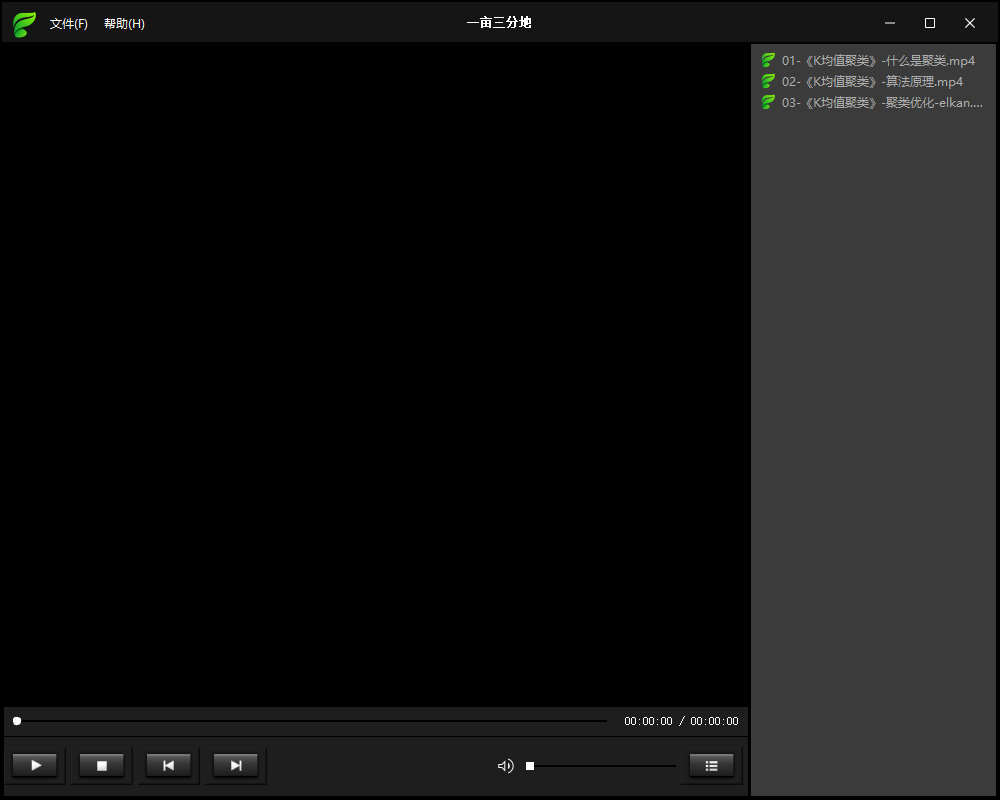配套视频课程已更新完毕,大家可通过以下两种方式观看视频讲解:
条件变量是C++11提供的另外一种用于等待的同步机制,它能阻塞一个或多个线程,直到收到另外一个线程发出的通知或者超时时,才会唤醒当前阻塞的线程。条件变量需要和互斥量配合起来使用,C++11提供了两种条件变量:
condition_variable:需要配合std::unique_lock<std::mutex>进行wait操作,也就是阻塞线程的操作。condition_variable_any:可以和任意带有lock()、unlock()语义的mutex搭配使用,也就是说有四种:std::mutex:独占的非递归互斥锁std::timed_mutex:带超时的独占非递归互斥锁std::recursive_mutex:不带超时功能的递归互斥锁std::recursive_timed_mutex:带超时的递归互斥锁
条件变量通常用于生产者和消费者模型,大致使用过程如下:
-
拥有条件变量的线程获取互斥量
-
循环检查某个条件,如果条件不满足阻塞当前线程,否则线程继续向下执行
- 产品的数量达到上限,生产者阻塞,否则生产者一直生产。。。
- 产品的数量为零,消费者阻塞,否则消费者一直消费。。。
-
条件满足之后,可以调用
notify_one()或者notify_all()唤醒一个或者所有被阻塞的线程- 由消费者唤醒被阻塞的生产者,生产者解除阻塞继续生产。。。
- 由生产者唤醒被阻塞的消费者,消费者解除阻塞继续消费。。。
-
condition_variable {#1-condition-variable} =============================================
1.1 成员函数 {#1-1-成员函数}
condition_variable的成员函数主要分为两部分:线程等待(阻塞)函数 和线程通知(唤醒)函数,这些函数被定义于头文件 <condition_variable>。
-
等待函数
调用
wait()函数的线程会被阻塞|-------------------|----------------------------------------------------------------------------------------------------------------------------------------| |
1 2 3 4 5|// ① void wait (unique_lock<mutex>& lck); // ② template <class Predicate> void wait (unique_lock<mutex>& lck, Predicate pred);|-
函数①:调用该函数的线程直接被阻塞
-
函数②:该函数的第二个参数是一个判断条件,是一个返回值为布尔类型的函数
该参数可以传递一个有名函数的地址,也可以直接指定一个匿名函数表达式返回false当前线程被阻塞,表达式返回true当前线程不会被阻塞,继续向下执行
-
独占的互斥锁对象不能直接传递给
wait()函数,需要通过模板类unique_lock进行二次处理,通过得到的对象仍然可以对独占的互斥锁对象做如下操作,使用起来更灵活。| 公共成员函数 | 说明 | |---------------------------------------------------------------------------------------|-----------------------------------------| | lock | 锁定关联的互斥锁 | | try_lock | 尝试锁定关联的互斥锁,若无法锁定,函数直接返回 | | try_lock_for | 试图锁定关联的可定时锁定互斥锁,若互斥锁在给定时长中仍不能被锁定,函数返回 | | try_lock_until | 试图锁定关联的可定时锁定互斥锁,若互斥锁在给定的时间点后仍不能被锁定,函数返回 | | unlock | 将互斥锁解锁 |
-
如果线程被该函数阻塞,这个线程会释放占有的互斥锁的所有权,当阻塞解除之后这个线程会重新得到互斥锁的所有权,继续向下执行(这个过程是在函数内部完成的,了解这个过程即可,其目的是为了避免线程的死锁)。
wait_for()函数和wait()的功能是一样的,只不过多了一个阻塞时长,假设阻塞的线程没有被其他线程唤醒,当阻塞时长用完之后,线程就会自动解除阻塞,继续向下执行。|-----------------------|--------------------------------------------------------------------------------------------------------------------------------------------------------------------------------------------------------------------------------------------------------------------------------------------------| |
1 2 3 4 5 6 7|template <class Rep, class Period> cv_status wait_for (unique_lock<mutex>& lck, const chrono::duration<Rep,Period>& rel_time); template <class Rep, class Period, class Predicate> bool wait_for(unique_lock<mutex>& lck, const chrono::duration<Rep,Period>& rel_time, Predicate pred);|wait_until()函数和wait_for()的功能是一样的,它是指定让线程阻塞到某一个时间点,假设阻塞的线程没有被其他线程唤醒,当到达指定的时间点之后,线程就会自动解除阻塞,继续向下执行。|-----------------------|---------------------------------------------------------------------------------------------------------------------------------------------------------------------------------------------------------------------------------------------------------------------------------------------------------------------------| |
1 2 3 4 5 6 7|template <class Clock, class Duration> cv_status wait_until (unique_lock<mutex>& lck, const chrono::time_point<Clock,Duration>& abs_time); template <class Clock, class Duration, class Predicate> bool wait_until (unique_lock<mutex>& lck, const chrono::time_point<Clock,Duration>& abs_time, Predicate pred);| -
-
通知函数
|-------------|-----------------------------------------------------------------| |
1 2|void notify_one() noexcept; void notify_all() noexcept;|notify_one():唤醒一个被当前条件变量阻塞的线程notify_all():唤醒全部被当前条件变量阻塞的线程
1.2 生产者和消费者模型 {#1-2-生产者和消费者模型}
我们可以使用条件变量来实现一个同步队列,这个队列作为生产者线程和消费者线程的共享资源,示例代码如下:
|------------------------------------------------------------------------------------------------------------------------------------------------------------------------------------------------------------------------------------------------------------------------------------------|--------------------------------------------------------------------------------------------------------------------------------------------------------------------------------------------------------------------------------------------------------------------------------------------------------------------------------------------------------------------------------------------------------------------------------------------------------------------------------------------------------------------------------------------------------------------------------------------------------------------------------------------------------------------------------------------------------------------------------------------------------------------------------------------------------------------------------------------------------------------------------------------------------------------------------------------------------------------------------------------------------------------------------------------------------------------------------------------------------------------------------------------------------------------------------------------------------------------------------------------------------------------------------------------------------------------------------------------------------------------------------------------------------------------------------------------------------------------------------------------------------------------------------------------------------------------------------------------------------------------------------|
| 1 2 3 4 5 6 7 8 9 10 11 12 13 14 15 16 17 18 19 20 21 22 23 24 25 26 27 28 29 30 31 32 33 34 35 36 37 38 39 40 41 42 43 44 45 46 47 48 49 50 51 52 53 54 55 56 57 58 59 60 61 62 63 64 65 66 67 68 69 70 71 72 73 74 75 76 77 78 79 80 81 82 83 84 85 86 87 88 89 90 91 92 93 94 | #include <iostream> #include <thread> #include <mutex> #include <list> #include <functional> #include <condition_variable> using namespace std; class SyncQueue { public: SyncQueue(int maxSize) : m_maxSize(maxSize) {} void put(const int& x) { unique_lock<mutex> locker(m_mutex); // 判断任务队列是不是已经满了 while (m_queue.size() == m_maxSize) { cout << "任务队列已满, 请耐心等待..." << endl; // 阻塞线程 m_notFull.wait(locker); } // 将任务放入到任务队列中 m_queue.push_back(x); cout << x << " 被生产" << endl; // 通知消费者去消费 m_notEmpty.notify_one(); } int take() { unique_lock<mutex> locker(m_mutex); while (m_queue.empty()) { cout << "任务队列已空,请耐心等待。。。" << endl; m_notEmpty.wait(locker); } // 从任务队列中取出任务(消费) int x = m_queue.front(); m_queue.pop_front(); // 通知生产者去生产 m_notFull.notify_one(); cout << x << " 被消费" << endl; return x; } bool empty() { lock_guard<mutex> locker(m_mutex); return m_queue.empty(); } bool full() { lock_guard<mutex> locker(m_mutex); return m_queue.size() == m_maxSize; } int size() { lock_guard<mutex> locker(m_mutex); return m_queue.size(); } private: list<int> m_queue; // 存储队列数据 mutex m_mutex; // 互斥锁 condition_variable m_notEmpty; // 不为空的条件变量 condition_variable m_notFull; // 没有满的条件变量 int m_maxSize; // 任务队列的最大任务个数 }; int main() { SyncQueue taskQ(50); auto produce = bind(&SyncQueue::put, &taskQ, placeholders::_1); auto consume = bind(&SyncQueue::take, &taskQ); thread t1[3]; thread t2[3]; for (int i = 0; i < 3; ++i) { t1[i] = thread(produce, i+100); t2[i] = thread(consume); } for (int i = 0; i < 3; ++i) { t1[i].join(); t2[i].join(); } return 0; } |
条件变量condition_variable类的wait()还有一个重载的方法,可以接受一个条件,这个条件也可以是一个返回值为布尔类型的函数,条件变量会先检查判断这个条件是否满足,如果满足条件(布尔值为true),则当前线程重新获得互斥锁的所有权,结束阻塞,继续向下执行;如果不满足条件(布尔值为false),当前线程会释放互斥锁(解锁)同时被阻塞,等待被唤醒。
上面示例程序中的put()、take()函数可以做如下修改:
-
put()函数
|---------------------------------------|---------------------------------------------------------------------------------------------------------------------------------------------------------------------------------------------------------------------------------------------------------------------| |
1 2 3 4 5 6 7 8 9 10 11 12 13|void put(const int& x) { unique_lock<mutex> locker(m_mutex); // 根据条件阻塞线程 m_notFull.wait(locker, [this]() { return m_queue.size() != m_maxSize; }); // 将任务放入到任务队列中 m_queue.push_back(x); cout << x << " 被生产" << endl; // 通知消费者去消费 m_notEmpty.notify_one(); }| -
take()函数
|------------------------------------------|-----------------------------------------------------------------------------------------------------------------------------------------------------------------------------------------------------------------------------------------------------------------------| |
1 2 3 4 5 6 7 8 9 10 11 12 13 14|int take() { unique_lock<mutex> locker(m_mutex); m_notEmpty.wait(locker, [this]() { return !m_queue.empty(); }); // 从任务队列中取出任务(消费) int x = m_queue.front(); m_queue.pop_front(); // 通知生产者去生产 m_notFull.notify_one(); cout << x << " 被消费" << endl; return x; }|
修改之后可以发现,程序变得更加精简了,而且执行效率更高了,因为在这两个函数中的while循环被删掉了,但是最终的效果是一样的,推荐使用这种方式的wait()进行线程的阻塞。
- condition_variable_any {#2-condition-variable-any} =====================================================
2.1 成员函数 {#2-1-成员函数}
condition_variable_any的成员函数也是分为两部分:线程等待(阻塞)函数 和线程通知(唤醒)函数,这些函数被定义于头文件 <condition_variable>。
-
等待函数
|-------------------|----------------------------------------------------------------------------------------------------------------------------------------------| |
1 2 3 4 5|// ① template <class Lock> void wait (Lock& lck); // ② template <class Lock, class Predicate> void wait (Lock& lck, Predicate pred);|- 函数①:调用该函数的线程直接被阻塞
- 函数②:该函数的第二个参数是一个判断条件,是一个返回值为布尔类型的函数
该参数可以传递一个有名函数的地址,也可以直接指定一个匿名函数表达式返回false当前线程被阻塞,表达式返回true当前线程不会被阻塞,继续向下执行
- 可以直接传递给
wait()函数的互斥锁类型有四种,分别是:std::mutex、std::timed_mutex、std::recursive_mutex、std::recursive_timed_mutex
如果线程被该函数阻塞,这个线程会释放占有的互斥锁的所有权,当阻塞解除之后这个线程会重新得到互斥锁的所有权,继续向下执行(这个过程是在函数内部完成的,了解这个过程即可,其目的是为了避免线程的死锁)。
wait_for()函数和wait()的功能是一样的,只不过多了一个阻塞时长,假设阻塞的线程没有被其他线程唤醒,当阻塞时长用完之后,线程就会自动解除阻塞,继续向下执行。|-------------------|-----------------------------------------------------------------------------------------------------------------------------------------------------------------------------------------------------------------------------------------------------------------------------------------------| |
1 2 3 4 5|template <class Lock, class Rep, class Period> cv_status wait_for (Lock& lck, const chrono::duration<Rep,Period>& rel_time); template <class Lock, class Rep, class Period, class Predicate> bool wait_for (Lock& lck, const chrono::duration<Rep,Period>& rel_time, Predicate pred);|wait_until()函数和wait_for()的功能是一样的,它是指定让线程阻塞到某一个时间点,假设阻塞的线程没有被其他线程唤醒,当到达指定的时间点之后,线程就会自动解除阻塞,继续向下执行。|-----------------------|-----------------------------------------------------------------------------------------------------------------------------------------------------------------------------------------------------------------------------------------------------------------------------------------------------------------------| |
1 2 3 4 5 6 7|template <class Lock, class Clock, class Duration> cv_status wait_until (Lock& lck, const chrono::time_point<Clock,Duration>& abs_time); template <class Lock, class Clock, class Duration, class Predicate> bool wait_until (Lock& lck, const chrono::time_point<Clock,Duration>& abs_time, Predicate pred);| -
通知函数
|-------------|-----------------------------------------------------------------| |
1 2|void notify_one() noexcept; void notify_all() noexcept;|notify_one():唤醒一个被当前条件变量阻塞的线程notify_all():唤醒全部被当前条件变量阻塞的线程
2.2 生产者和消费者模型 {#2-2-生产者和消费者模型}
使用条件变量condition_variable_any同样可以实现上面的生产者和消费者的例子,代码只有个别细节上有所不同:
|---------------------------------------------------------------------------------------------------------------------------------------------------------------------------------------------------------------------------------------------------------------------------|---------------------------------------------------------------------------------------------------------------------------------------------------------------------------------------------------------------------------------------------------------------------------------------------------------------------------------------------------------------------------------------------------------------------------------------------------------------------------------------------------------------------------------------------------------------------------------------------------------------------------------------------------------------------------------------------------------------------------------------------------------------------------------------------------------------------------------------------------------------------------------------------------------------------------------------------------------------------------------------------------------------------------------------------------------------------------------------------------------------------------------------------------------------------------------------------------------------------------------------------------------------------------------------------------------------------------------------------------------------------------------------------------------------------------------------------------------------------------------------------------------------------------------------------------------------------------|
| 1 2 3 4 5 6 7 8 9 10 11 12 13 14 15 16 17 18 19 20 21 22 23 24 25 26 27 28 29 30 31 32 33 34 35 36 37 38 39 40 41 42 43 44 45 46 47 48 49 50 51 52 53 54 55 56 57 58 59 60 61 62 63 64 65 66 67 68 69 70 71 72 73 74 75 76 77 78 79 80 81 82 83 84 85 86 87 88 89 | #include <iostream> #include <thread> #include <mutex> #include <list> #include <functional> #include <condition_variable> using namespace std; class SyncQueue { public: SyncQueue(int maxSize) : m_maxSize(maxSize) {} void put(const int& x) { lock_guard<mutex> locker(m_mutex); // 根据条件阻塞线程 m_notFull.wait(m_mutex, [this]() { return m_queue.size() != m_maxSize; }); // 将任务放入到任务队列中 m_queue.push_back(x); cout << x << " 被生产" << endl; // 通知消费者去消费 m_notEmpty.notify_one(); } int take() { lock_guard<mutex> locker(m_mutex); m_notEmpty.wait(m_mutex, [this]() { return !m_queue.empty(); }); // 从任务队列中取出任务(消费) int x = m_queue.front(); m_queue.pop_front(); // 通知生产者去生产 m_notFull.notify_one(); cout << x << " 被消费" << endl; return x; } bool empty() { lock_guard<mutex> locker(m_mutex); return m_queue.empty(); } bool full() { lock_guard<mutex> locker(m_mutex); return m_queue.size() == m_maxSize; } int size() { lock_guard<mutex> locker(m_mutex); return m_queue.size(); } private: list<int> m_queue; // 存储队列数据 mutex m_mutex; // 互斥锁 condition_variable_any m_notEmpty; // 不为空的条件变量 condition_variable_any m_notFull; // 没有满的条件变量 int m_maxSize; // 任务队列的最大任务个数 }; int main() { SyncQueue taskQ(50); auto produce = bind(&SyncQueue::put, &taskQ, placeholders::_1); auto consume = bind(&SyncQueue::take, &taskQ); thread t1[3]; thread t2[3]; for (int i = 0; i < 3; ++i) { t1[i] = thread(produce, i + 100); t2[i] = thread(consume); } for (int i = 0; i < 3; ++i) { t1[i].join(); t2[i].join(); } return 0; } |
总结:以上介绍的两种条件变量各自有各自的特点,condition_variable 配合 unique_lock 使用更灵活一些,可以在在任何时候自由地释放互斥锁,而condition_variable_any 如果和lock_guard 一起使用必须要等到其生命周期结束才能将互斥锁释放。但是,condition_variable_any 可以和多种互斥锁配合使用,应用场景也更广,而 condition_variable 只能和独占的非递归互斥锁(mutex)配合使用,有一定的局限性。
 51工具盒子
51工具盒子
![[c++11]左值、左值引用,右值,右值引用](https://img1.51tbox.com/static/2024-11-13/yChShXRuXZkW.jfif)

